Rhododendrons in the Moscow region: varieties, planting and care

Rhododendrons are very beautiful flowering plants that amaze with a variety of species. Many people think that this exotic culture is not easy to grow in the Russian climate. However, some varieties may well decorate a garden in the middle lane. This article will tell you about the nuances of growing rhododendrons in the Moscow region.
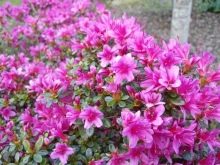
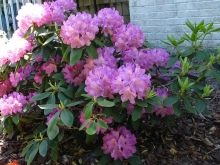
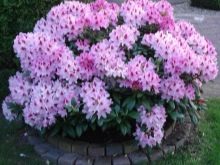
Peculiarities
Rhododendrons are part of the heather family. This is a numerous genus, including various representatives of the flora. These are deciduous, semi-deciduous, evergreen shrubs and trees. This genus includes azaleas known to many, which are very popular with flower growers.
In the wild, the culture can be found in Japan, China, Australia, North America and some other places. Plants love moisture. They often live near water bodies. Some species grow in shady undergrowths in mountainous areas. The soil in the areas of growth is calcareous, well-drained, rich in nutrients.
Depending on the species and variety, rhododendrons can have different heights. These are dwarf plants, medium-sized shrubs, and tall (up to 30 meters) trees. Leaves vary in shape and size.
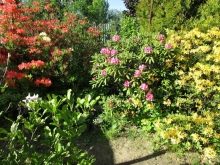
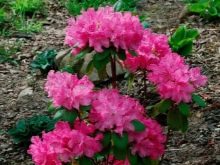

The flowers are bisexual. Usually they form racemose or corymbose inflorescences, but sometimes they are solitary. The color is variable. These are pink, yellow, purple, orange tones. There are also white flowers.
The culture blooms magnificently, very beautifully. The flowering period varies, but usually the buds appear in early spring and delight with their beauty for about a month. Fruits - 5-section polyspermous capsules.
Cultivation of a crop in the middle lane has a number of nuances. It is worth considering temperature differences during the day and when changing seasons, uneven precipitation and other climatic features. This requires a competent approach to plant cultivation.
The main thing is to choose the right variety.
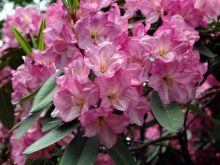

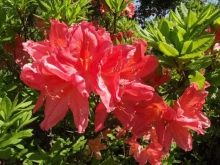
Types and varieties
Only winter-hardy crops are suitable for growing in conditions near Moscow. Consider a description of the best options.
First, we will talk about the types.
- Golden (kashkara). It is an evergreen shrub that grows up to 60 cm. The leaves are small, dense, glossy. The species got its name because of the golden yellow tint of the flowers. The opened buds reach 5 cm in diameter. They form beautiful umbellate inflorescences. Flowering begins in early summer. This type can withstand temperatures down to –26 ° C.
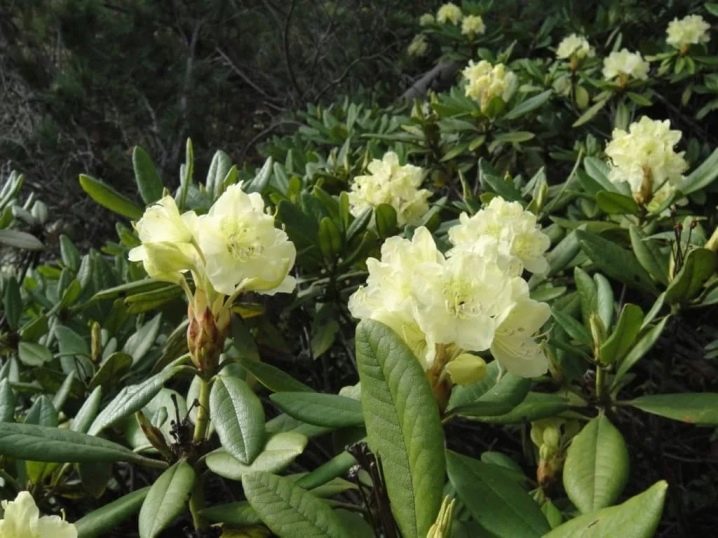
- Katevbinsky. This species has been used as a base for the creation of many hardy hybrids. The spreading bush grows up to 2-4 meters. The leaves are large, dark green, elliptical. They reach 15 cm in length and 5 cm in width.
Large flowers resemble bells. They gather in lush inflorescences, which makes the shrub even more attractive. The shade can be white, lilac, purple, red, speckled. Culture has no aroma. She is not afraid of frosts down to -32 ° C.
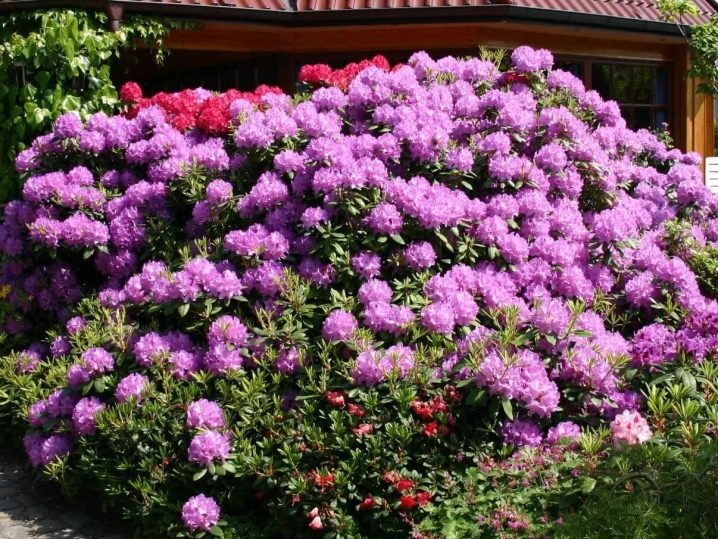
- Canadian. This is a low-growing branchy bush 0.8-1 m high. The leaves are slightly curled, green with a blue tint, slightly pubescent. The flowers are pinkish or purple in color. Plants bloom for 2 weeks. Bud formation occurs in May-June. This type can withstand temperatures as low as –32 ° C.
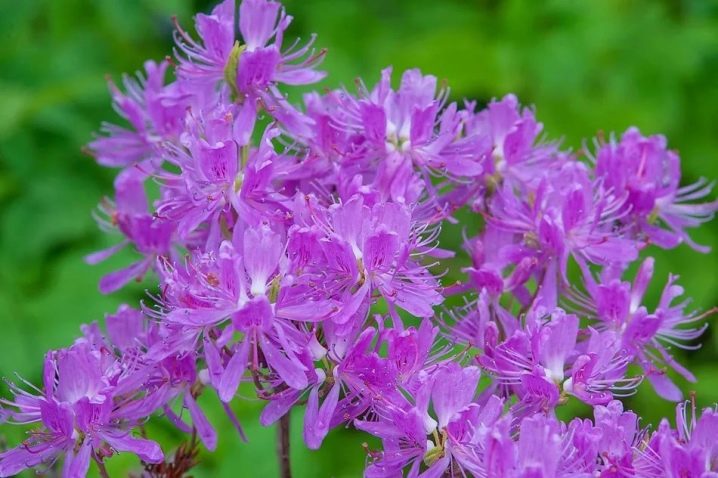
- Japanese. This is one of the most unpretentious decorative types. Deciduous shrub with a spreading crown can be quite tall (up to two meters).Large inflorescences consist of several (up to 12 pieces) flowers of a bright salmon-red tone. Leaves are thin, pointed. The bark is grayish. Abundant flowering adorns the culture at the end of May. Duration of flowering is more than a month. At the same time, the plant emits a rich, pleasant aroma. Frost resistance - up to –26 ° C.
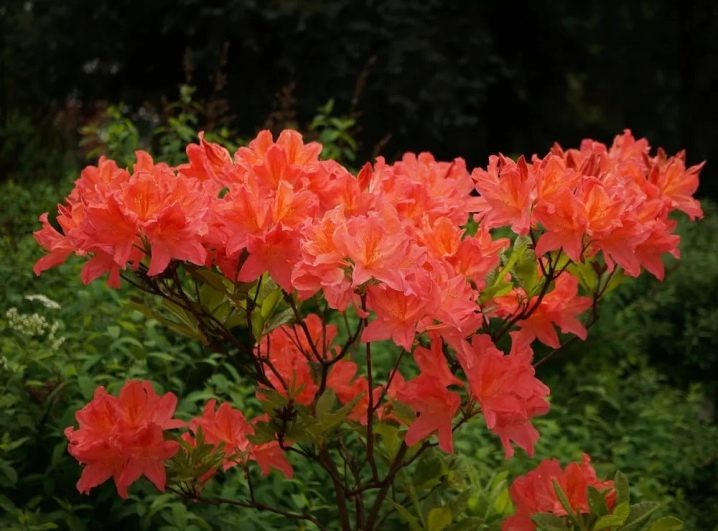
- Daursky. This species is a deciduous or evergreen upright shrub. In Russia it is called wild rosemary. The maximum plant height is 2 m. The bush is dense, with thin brown shoots.
The leaves are round, shiny. In autumn, they curl into tubes, after which most of them fall off. Flowering lasts 3 weeks. Pinkish purple petals form a graceful bell shape. The diameter of the flower is 2-4 cm. The species is shade-tolerant, even tolerates severe frosts (down to –45 ° C).

- Schlippenbach's rhododendron. The spreading shrub can grow from 0.6 to two meters. Leaves are slightly wavy. With the arrival of autumn, the greens are replaced by purple and golden tones. The buds bloom in April or May. The flowers are large, fragrant. The diameter of each is 5-8 cm. The color of the petals is pale pink. Frost resistance of the species up to –26 ° C.
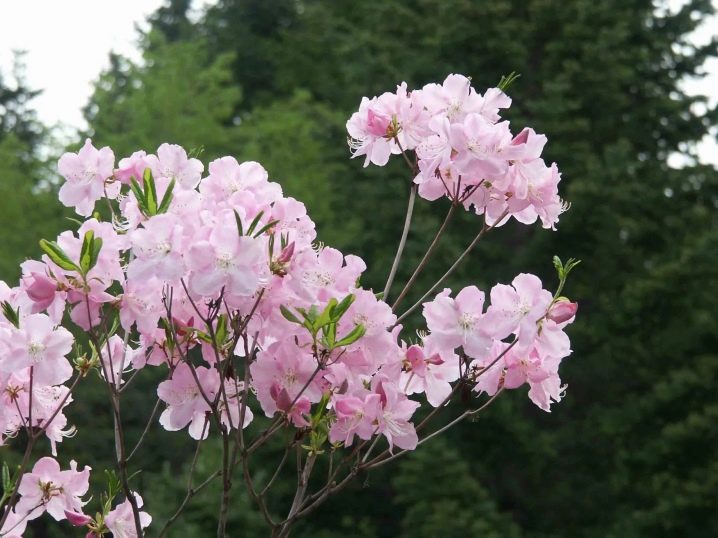
- Koster's rhododendron. This is a hybrid, which is a rather lush bush with a height of about 3 m. The color of the flowers is different. These are all shades of pink, yellow, orange, with a diameter of 4-7 cm. The plant is famous not only for its high decorative effect, but also for its pleasant aroma. Flowering lasts up to three weeks. The beginning of bud formation is the end of May. All varieties of this group are winter-hardy.
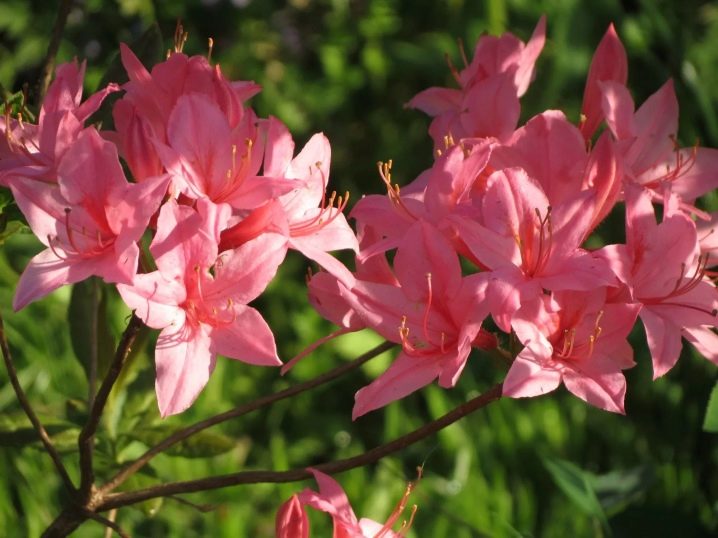
With regard to specific varieties, several names can be distinguished.
- Lights series. These plants of the deciduous group of American selection are very popular. Golden Lights, Rosy Lights, White Lights, Mandarin Lights, Lemon Lights present a variety of stunning shades.
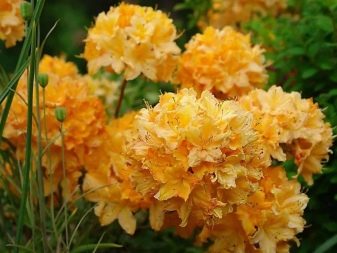
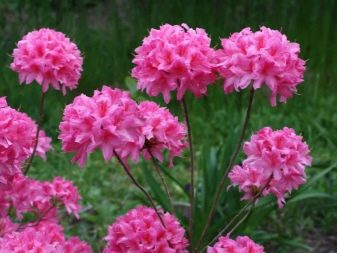
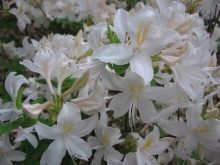
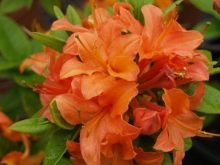
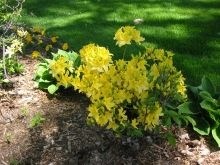
- Mount Saint Helens. Incredibly beautiful deciduous azalea. This delicate flower easily withstands 30-degree frosts. This variety is famous for the unusual color of the petals. Delicate pink tone with salmon notes and golden dots is simply amazing. The flowers are bell-shaped and form lush brushes. The dark green foliage becomes bronze by autumn.
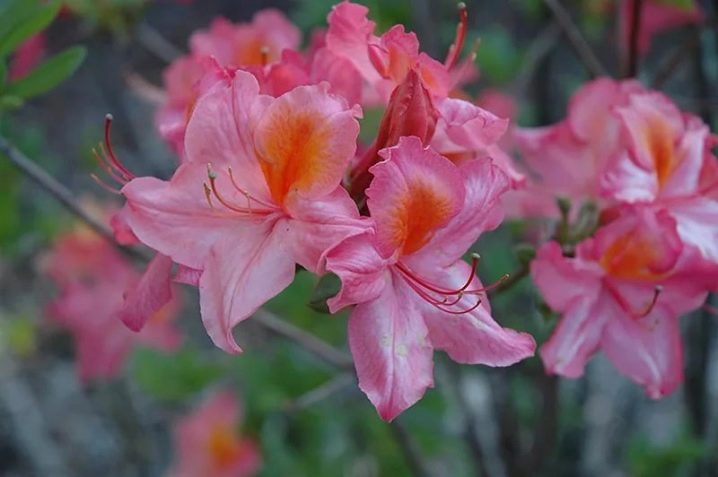
- Haaga. An evergreen Finnish variety pleases with bright pink flowers.

- Helsinki University. It will appeal to those who are not indifferent to pale pink shades.

- Grandiflorum. Gardeners looking to grow a magnificent globular bush covered with purple flowers can choose this variety.
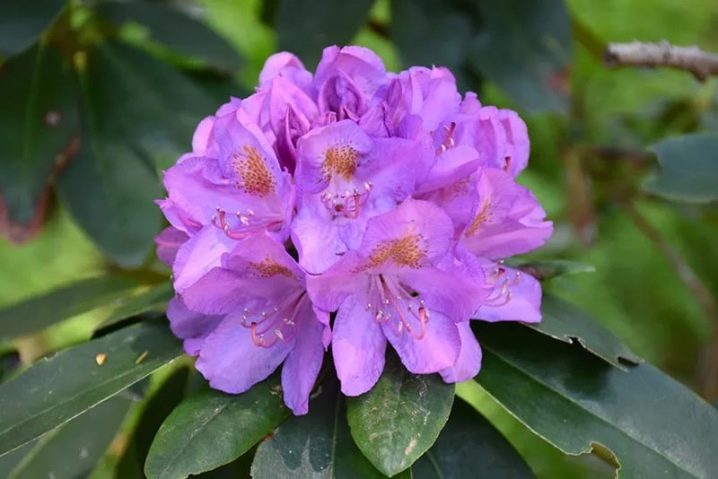
- Purpurkissen. The Japanese azalea is a charming dwarf plant. It can withstand temperatures down to –25ºC. Luxurious bright bloom has already conquered many gardeners.
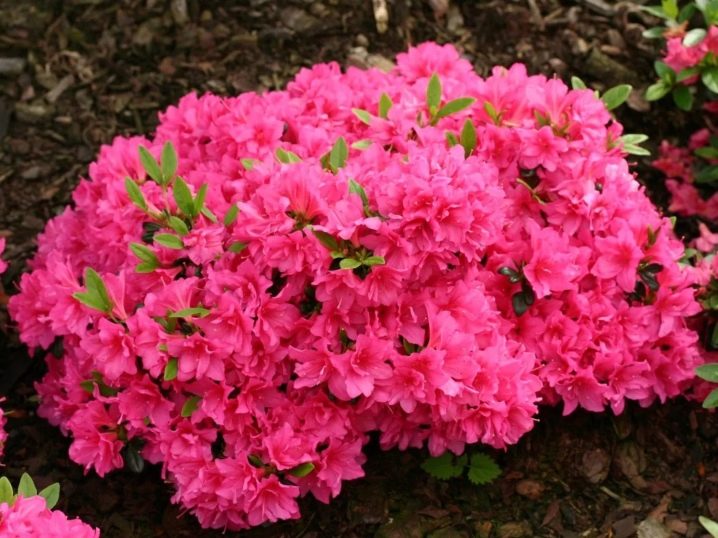
This is only a small part of the varieties available for cultivation in the Moscow region. The assortment is much wider. The main thing is to be interested in the level of winter hardiness of the variety and the nuances of plant care when choosing.
Landing
Planting a crop is permissible at any time of the year, except for the flowering period. The best time is spring.
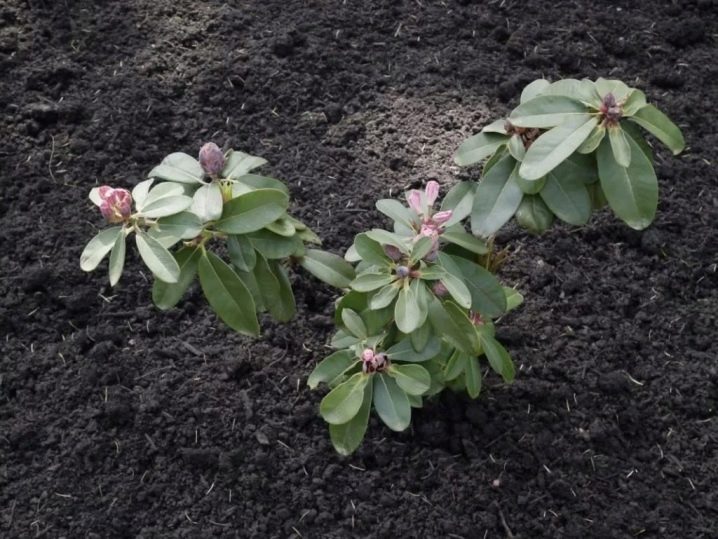
Seat selection
The plant does not like strong gusts of wind and too bright sunlight. Therefore, it is better for him to choose a place in the north or northeast of the site. It's not bad if the place is protected from the sun by a wall of some kind. It is important to make sure that the risk of falling snow mass from the roof on the bush is excluded.
In the wild, the crop is often shaded by trees. In this regard, the same conditions can be created in the garden. The main thing is that the root system of the tree is not located in the ground at the same level as the roots of the rhododendron. Suitable "neighbors" such as apple trees, pears, cherries, pines, larch. TO important requirements also include deep bedding of groundwater.

The soil
The culture needs a loose, breathable, acidic soil. The latter indicator should be between 4.5 and 5.5 units. If necessary, the soil can be acidified.To do this, you need to add sulfuric acid fertilizers and high peat to it. A special soil for rhododendrons can be used as the main retainer. And also coniferous and leafy soil, river sand should be added to the planting pit.
Another prerequisite for the health and full development of a plant is the presence of good drainage. Otherwise, stagnant moisture will negatively affect the shrub.
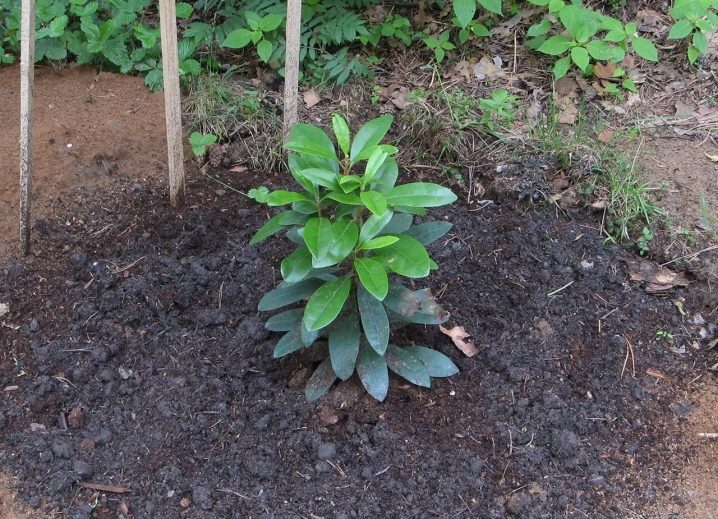
Landing technology
The root system of the culture is shallow, so the planting pit is made small. A depth of 40 cm is sufficient. The process is pretty straightforward.
- Dig a hole 60 × 60 cm in size.
- A drainage layer is placed at the bottom.
- The rest of the space is filled with prepared soil, but not completely.
- The seedling is carefully placed in the hole. You can pre-soak the roots in water to spread them out without damaging them. It should be remembered that the root collar cannot be buried.
- The remaining space is filled with a substrate. Seal it gently.
- Produce abundant watering.
- The trunk circle is mulched with needles. You can also use oak leaves.
- If necessary, a temporary support is installed on which the seedling rests.
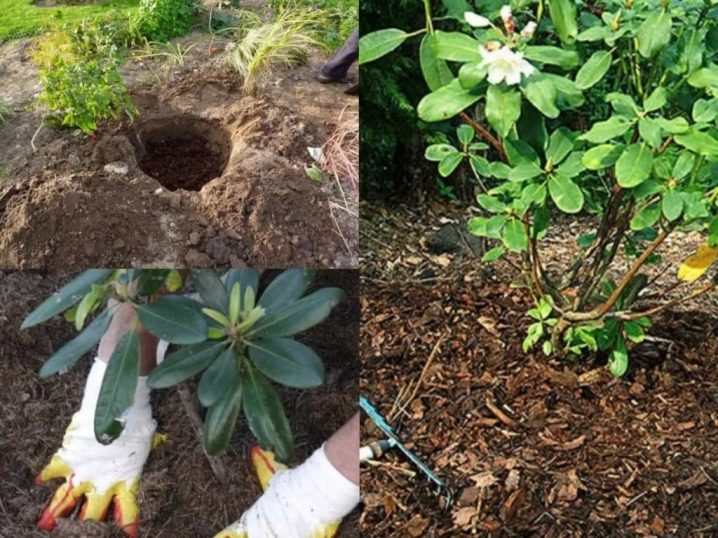
Care
Taking care of the plant is easy if you follow all the recommendations of the experts.
Watering
As already mentioned, culture loves moisture. In this regard, much attention is paid to watering. The soil is moistened as needed. You should watch when the top layer dries. It is necessary to water the culture both in summer and autumn (the only exception is very rainy weather). It is not necessary to transfuse the plant. It is better to apply moisture more often, but in small quantities.
For water procedures, it is better to use settled rainwater. During flowering and in hot weather, it is necessary to spray the bushes. Better to do this in the morning or evening. This will protect the foliage from possible sunburn.
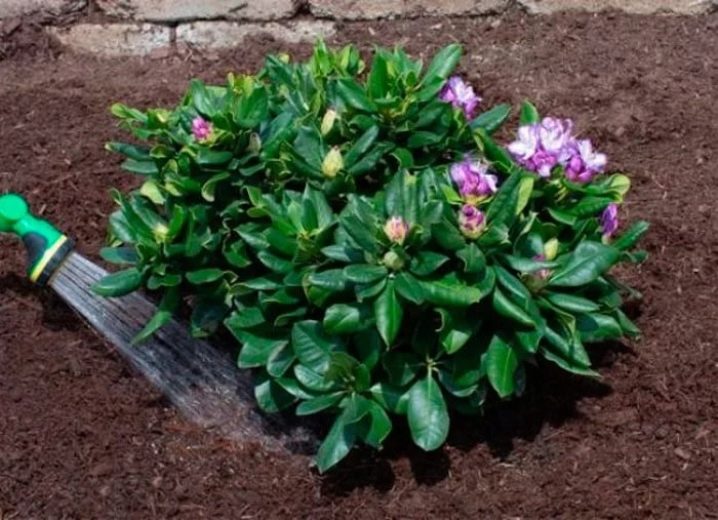
Top dressing
Do not forget about fertilizing the plant. Additional nutrition helps exotic culture to feel comfortable in difficult climatic conditions. Bushes are fed from spring to mid-summer. In March, you can use special mineral fertilizers with nitrogen. In July, top dressing with potassium and phosphorus will be appropriate.
It is important to remember that fertilizers should be calcium-free. Do not use wood ash. It promotes a change in the soil environment, which becomes alkaline. This is bad for culture.

Mulching
Since the root system of rhododendrons is superficial, it is undesirable to loosen the soil around the bushes. Mulching the root circle comes to the rescue. The best solution is to use coniferous litter (the layer should be 5-7 cm thick). This eliminates weeds and also provides thermal protection for the roots in winter.
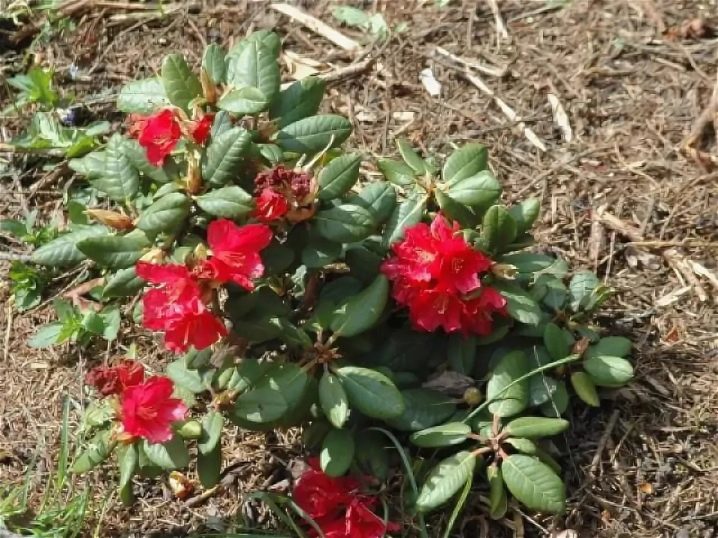
Pruning
Rhododendron itself grows neat. Special crown shaping is rarely required. Basically, only a sanitary haircut is carried out, in which the shoots damaged in winter are removed. This is done in early spring. The corrective procedure is carried out immediately after the flowering of the plant. If you do this later than 3 weeks after the end of this period, new flower buds will not be able to start.
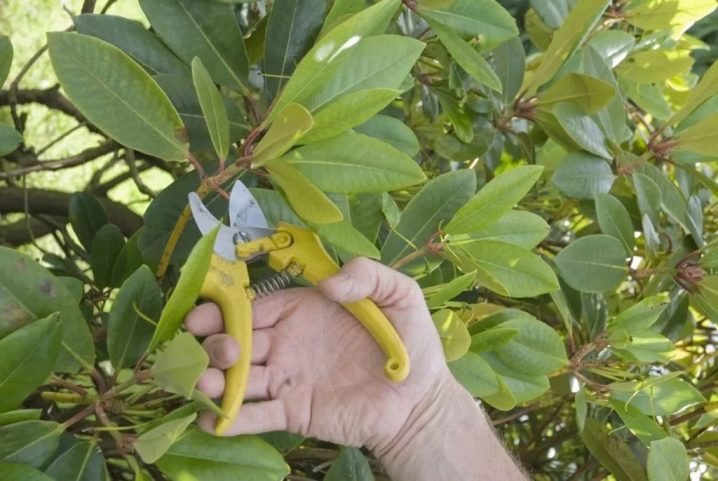
Preparing for winter
Although frost-resistant varieties endure the winter, maintaining their health and their decorative qualities, not all gardeners run the risk of growing them as non-sheltering varieties. Plants are not afraid of frost, but cold winds can still damage crop health. As a result, she may refuse to bloom.
To ensure that the plant is protected from freezing, shelters are made. For this, the bush is covered with a special material. Then it is carefully fixed with a rope. The shelter is removed in early spring, after the snow has melted.
You can also cover the plant for the winter with another method. For example, dig in arcs around the bush, and stretch a non-woven material over them.From below, the shelter is pressed down by a load that prevents frosty air from entering.
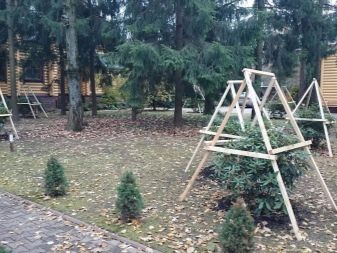
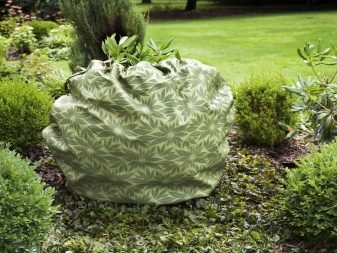
Reproduction
There are several ways to breed rhododendron.
Seeds
This method involves sowing seeds in boxes with suitable soil. The plantings are covered with glass and placed in a warm, well-lit place. Organize regular watering and airing. When the first leaves appear, future bushes are distributed in separate containers. Plants are transplanted into open ground only in the third or fourth year.
In the conditions of the Moscow region, this method is considered unproductive. In addition, it takes a long time, which is why it is rarely used.
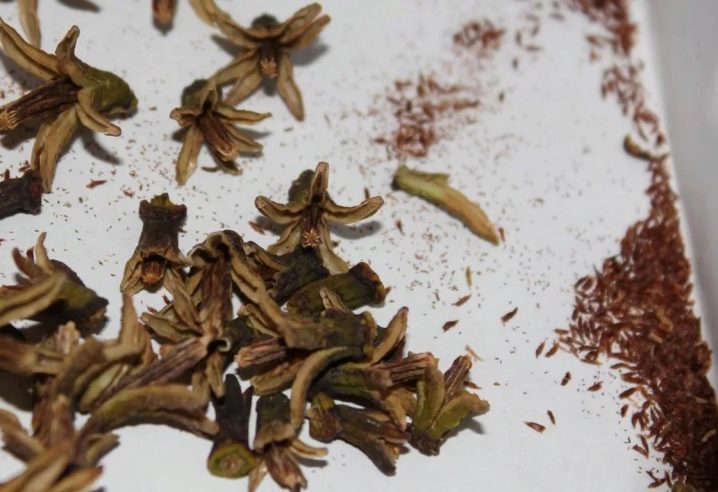
Cuttings
This method is also tricky. Cuttings about 10 cm long are taken from semi-lignified shoots. Each must have a couple of leaves and at least 2 developed buds. The planting material is treated with a growth stimulator and planted in a mixture of sand and peat.
Development takes place in a greenhouse environment. After 4 months, the seedlings are transferred into containers with an acidic substrate. They are planted in open ground only after 1-2 years.

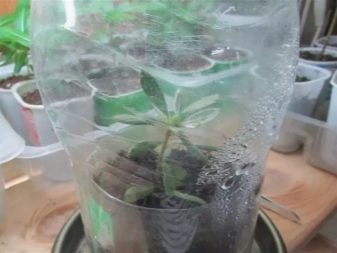
Layers
This is the best option. At the beginning of spring, several lower young shoots (no more than 5) are tilted and buried in 13-15 cm in depth. The upper part is fixed vertically. Care is carried out as for the main bush (watering, spraying, fertilizing).
The next spring, the layers are separated. They are transplanted to another place as independent plants. If you do this earlier, young plants will not have time to adapt to the cold. They might just die.
To preserve the layers until the time of transplantation, they are covered for the winter.

Diseases and pests
If the grower sees signs of rust or mottling, action should be taken immediately. Spraying with copper sulfate is used as a treatment. Cancer cannot be cured. Diseased plants are destroyed. For prophylactic purposes, Bordeaux mixture is used. Processing is carried out in early spring and autumn.
As for pests, most often, plants attack aphids, slugs, spider mites, and scale insects. If these or other insects are found, apply insecticides.

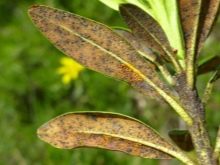
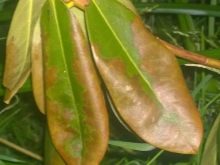
How to plant rhododendrons in the Moscow region, see below.



































































































The comment was sent successfully.